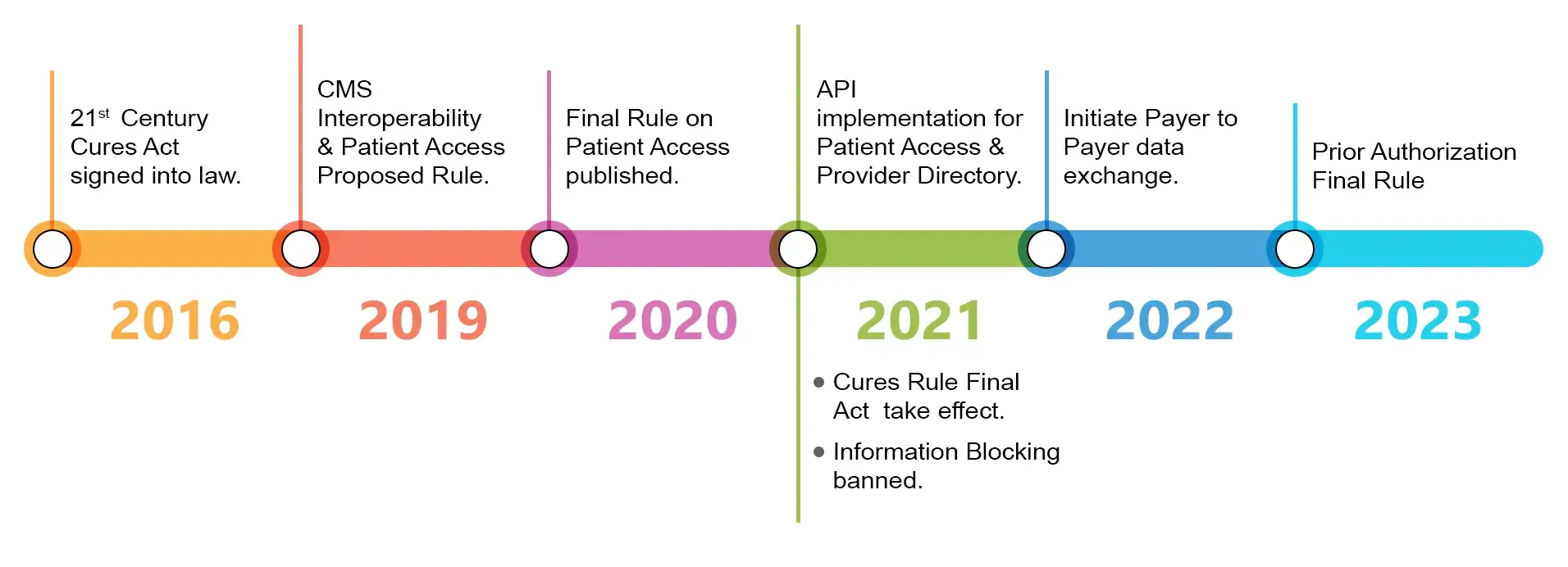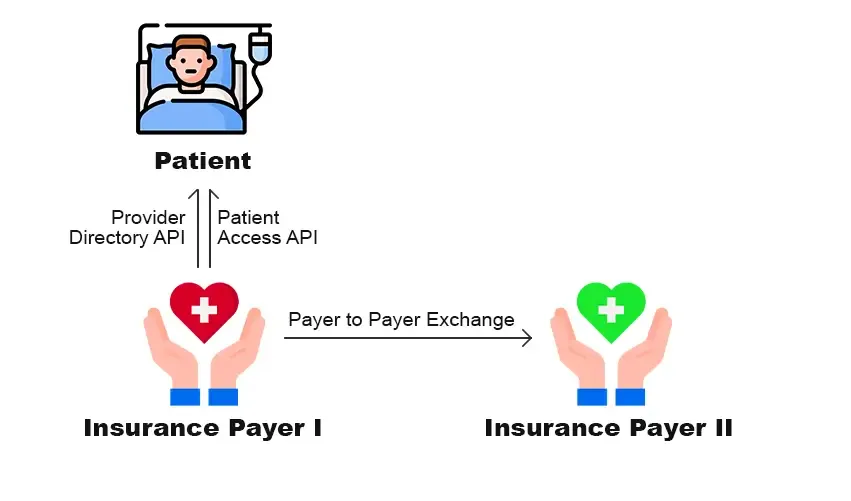Interoperability remains one of healthcare’s greatest challenges. For decades the healthcare industry has struggled to achieve the secure exchange of health information.
As the interoperability challenges continue to be a pressing concern, FHIR has recently become one of the most popular protocols for joining disparate systems together.
FHIR has a unique combination of the standard HL7 message format with the structure of a web-based API and is easier to implement and manage owing to its REST-based foundation which strongly aligns with the current technology needs and architectural trends.
Today, the healthcare industry has started moving towards the broader adoption of FHIR standards, and the recent finalization of the Federal Mandates which has interoperability at its core has provided the much-needed stimulus.
In 2018, CMS and ONC embarked on the healthcare interoperability journey, to ensure that patients would have access to their healthcare data wherever and whenever they need it, hurdles that keep vital patient health data locked away in digital silos. The following is a snapshot of some of the initial initiatives taken by CMS/ONC in this regard:
- Blue Button 2.0: Launch of Blue Button 2.0, a secure way for Medicare beneficiaries to access & share their personal health data using FHIR standards.
- Documentation Requirement Lookup Service: Launch of a Prototype FHIR based Documentation Requirement Lookup Service, an API-enabled repository of Medicare FFS documentation & prior authorization requirements.
- Beneficiary Claims Data API (BCDA): Launch of the Beneficiary Claims Data API (BCDA), an FHIR-enabled API for Accountable Care Organizations (ACOs) participating in the Shared Savings Program to retrieve Medicare claims data for their beneficiaries.
- Data at the Point of Care (DPC) pilot: Announcement of the Data at the Point of Care (DPC) pilot, that provides Medicare claims data directly to providers via an interoperable FHIR - standard-based API to promote better patient care.
Understanding the Interoperability Rules Released by ONC and CMS
The ONC Final Rule lays out regulations on two broad areas namely: Usage of the Application Programming Interface (API) and Prevention of the Information Blocking practices.

Usage of the Application Programming Interface (API) :
Healthcare providers must use certified EHR solutions with SMART on FHIR capabilities and FHIR APIs, according to the final regulation of the 21st Century Cures Act. EHR vendors must adopt these standards to meet ONC certification criteria. The Cures Act proposes the usage of the standardized format-FHIR that allows a new market of health apps to leverage data from any EHR in the standard format.
Prevention of the Information Blocking practices
Providers, health IT developers, health information exchanges (HIEs), and health information networks are prohibited from using Information Blocking techniques under the Cures Act. Information blocking is a practice that interferes with access, exchange, or use of electronic health information (EHI). An example of Information Blocking would be the restriction of authorized access, exchange, or use of such information for treatment and other permitted purposes under the applicable law.
The deadline for stakeholders to comply with the Cures Act’s information blocking provisions was originally set for November 2, 2020. To focus on COVID-19 issues, HHS postponed the information blocking compliance date to April 5, 2021, in October 2020.
Interoperability and Patient Access rule
In May 2020, CMS finalized the Interoperability and Patient Access rule. Based on Medicare’s Blue Button initiative that provided claims data to patients, the final rule focused on driving interoperability putting patients at the center of their health care and ensuring they have access to their health information. This rule requires a seamless and secure flow of data among all parties involved in patient care (patients, providers, and payers) to allow patients to access their health information when they need it.
Following is the summary of the noted changes brought about as a result of the Patient Access Rule:


Patient Access API: Claims & Encounter: Make health information available through APIs connecting third-party software apps. Provider Directory API: Maintain & publish provider directory data through APIs with the latest updates. Payer to Payer Data Exchange: Exchange data set (of up to five years) to another plan that currently covers the enrollee. Admission, Discharge & Transfer (ADT) Event Notifications: Standardized Patient ADT event messaging system between health systems to improve care coordination.
CMS Interoperability and Prior Authorization proposed rule
Most recently, the CMS Interoperability and Prior Authorization rule got released according to which payers, providers, and patients need to have electronic access to Pending and Active prior authorization (PA) decisions. This proposed rule would build on the efforts around FHIR APIs and would ensure that providers and payers have the necessary data. As per this rule, payers will be required to include information regarding any pending and active PA decisions, into an API through which data will be shared with providers as requested, and other payers to assist patients moving between or among payers.
Some of the noted changes brought about as a result of this Rule are as follows:
- Patient Access API: Patient access to Active & Pending Prior Authorization data.
- Provider Access API: Provider access to Active & Pending Prior Authorization data.
- Payer to Payer Data Exchange: Exchange Prior Authorization data between Payers.
- Document Requirement Lookup Service (DRLS) API: Lookup for Prior Authorization requirements.
- PA support (PAS) API: Exchange of Prior Authorization request and response.
Encouraging the use of FHIR will help break down barriers that exist within the healthcare IT infrastructure. The stage is now set for a new phase focused on how the FHIR standard will be used to create an interoperable infrastructure. For the time being, the easiest route is to create an FHIR facade in front of existing systems.

